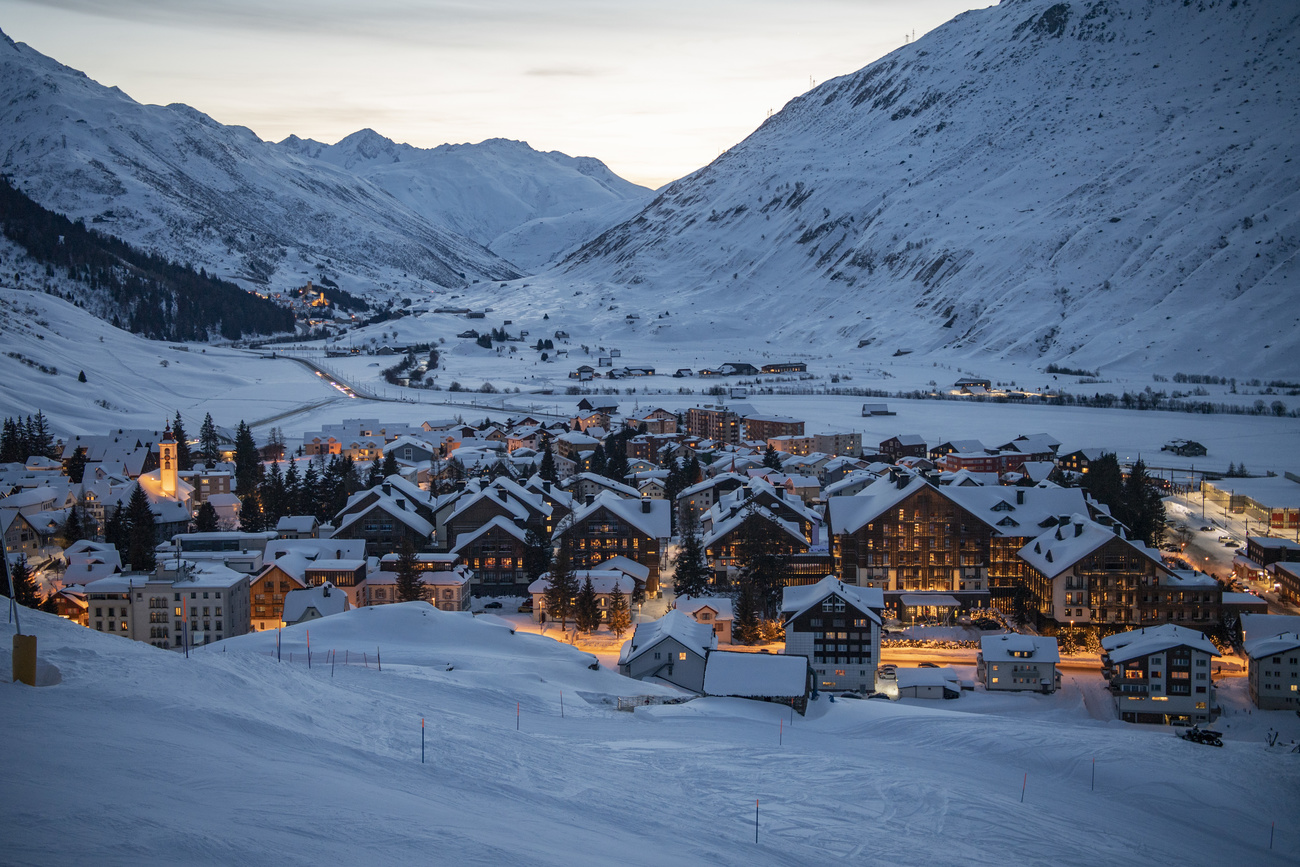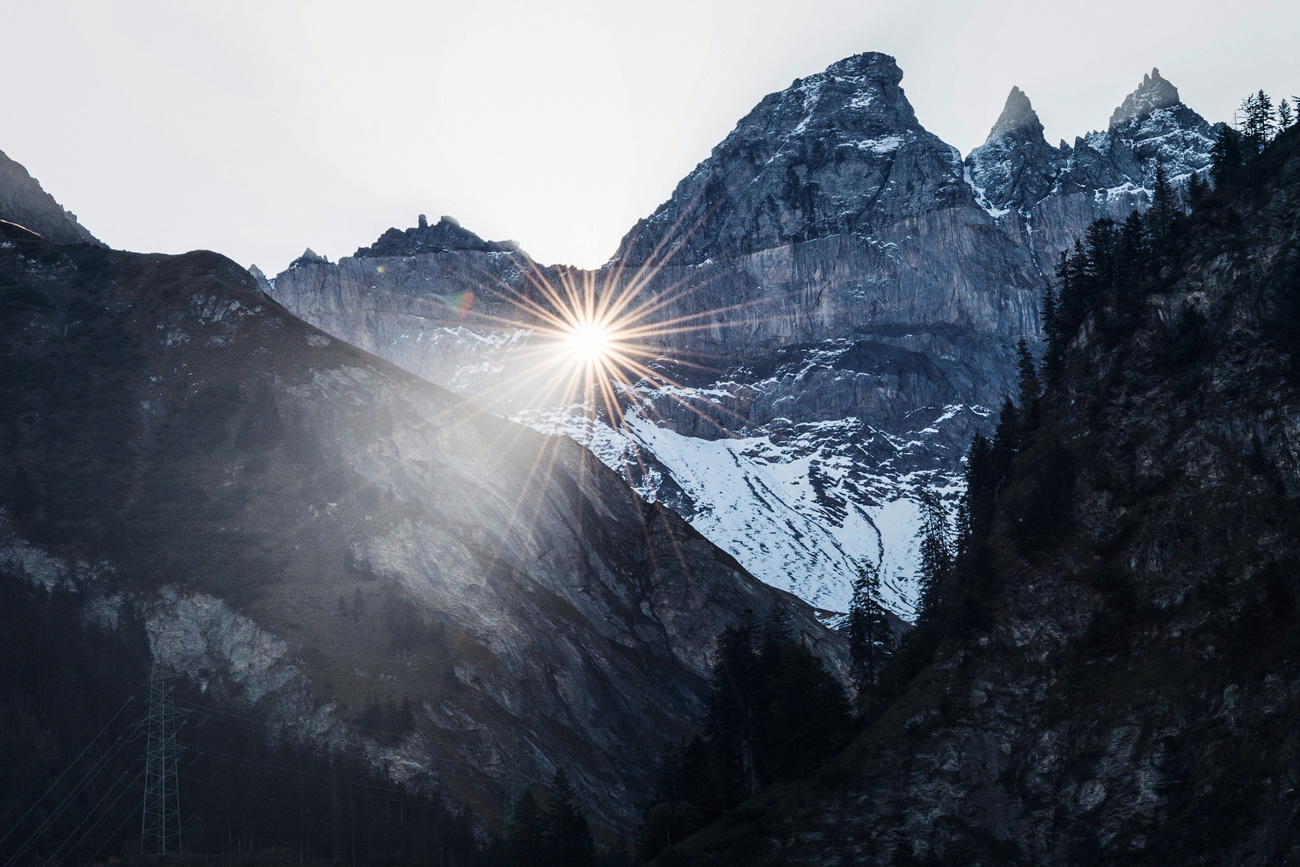Looking back at the legendary Lauberhorn race

The 84th international Lauberhorn ski race, which begins Friday in Wengen, marks the end of an era - the Ernst and Viktor Gertsch era, a father-son dynasty that has presided over the event since it began in 1930.
“I don’t think about my own footmarks on the Lauberhorn,” says 72-year-old Viktor, who will step down next week as race president after 44 years. Along with the famous downhill Saturday, Gertsch also commands Friday’s super combined and Sunday’s slalom. “I leave behind a good team with a strong future.”
Under Viktor’s tutelage the race achieved global prominence – the highlight of the season for many alpine ski fans. “Viktor turned the Lauberhorn into one of the best races in the World Cup,” says Susie Fuchs who serves on his team of core volunteers. “He made Wengen part of the big world. For ten days, we are important.”
The Lauberhorn downhill reigns as the oldest, longest, fastest, and arguably the most beautiful course on the World Cup circuit. It’s also known as the most physically demanding. Dozens of racers will push off from the tiny wooden hut at the top of the course, speeding with reckless abandon down the blue lines of an iced mountain shoulder towards the signature jump, the Hundschopf.
That breathtaking jump – in the shadow of the Eiger, Mönch and Jungfrau – has kept spectators returning through the years to watch the alpine greats, from Karl Molitor, Toni Sailer and Franz Klammer to Bruno Kernen and Bode Miller.
This Saturday, 35,000 fans are expected to pour into Wengen on quaint cogwheel trains, while more than one million others will likely watch the race live on Swiss TV, consistently the largest audience for a sports event in Switzerland.
Kernen took a 360-degree camera down the Lauberhorn slopes ahead of this year’s race and recorded the below snapshot of the course.
Early years
Back in 1930, when Ernst initiated the Lauberhorn to prove the Swiss could beat the British, it was hardly a national spectacle. A handful of onlookers watched the Swiss capture two titles – Ernst won the slalom and his friend Christian Rubi won the downhill. Meanwhile, Bill Bracken won the combined, Britain’s first and last Lauberhorn trophy, a small victory for his Kandahar Club colleagues in Mürren who actually invented both downhill and slalom racing.
In the early years, Ernst would shout instructions from a megaphone as racers, including Viktor, tied up their ski boot laces, grabbed straight poles and strapped on long wooden skis. In those days, they careened down piles of choppy snow – piste machines would not arrive until the 1970s.
They were among the glory days for Swiss racers who won 14 of the first 15 gold medals on the Lauberhorn downhill. Today the Swiss are still ahead of their historic Austrian rivals, with a total of 32 first-place Swiss victories compared to Austria’s 24.
During Ernst’s tenure, the Hundschopf was actually two metres higher. Over the years Viktor has made several course alterations – a change in the S before the tunnel, a wider Hannegg with fewer trees, and a larger finish – all done for safety reasons at the behest of FIS, the International Ski Federation.

Speed
Now the average race time is two and a half minutes, nearly half the time it took in the 1950s. “These days, the skis are much faster, and the artificial snow that the FIS requires is more compact,” Viktor explains. “That makes it difficult to slow down on the turns.”
Whereas in the 1970s Austria’s Franz Klammer posted a top World Cup speed of 120 km/h, today the top recorded speed is 161.9, hit by France’s Johan Clarey last year on the Hannegg stretch. “I don’t think anyone can beat that,” Viktor offers. “At least, I don’t want anyone to; it’s too dangerous.”
Viktor shudders to recall the worst day in Lauberhorn history – January 18, 1991 – when Austrian Gernot Reinstadler died after slamming into a safety net during a training finish. The race was cancelled.
While safety remains the biggest on-going concern, the strength of the Swiss team is another. Urs Näpflin, Lauberhorn’s next president, laments the team’s recent lacklustre record, which affects spectator numbers. Come Saturday, he’s hoping for victory from past Swiss winners, Beat Feuz, Carlo Janka, Didier Défago, or perhaps from Patrick Küng who won this season’s downhill in Beaver Creek.
“The Swiss team always has its ups and downs,” Viktor says. “They will come back. Just look at the Europa Cup results this year; the first four winners were Swiss.”

Big money
Managing the budget, now at an all-time high of CHF 6.4 million ($7.06 million), is also a worry. As usual, Viktor expects to break even, assuming all three races proceed, yielding an estimated net gain for the region of CHF 5.1 million.
In 1970, when Viktor took over, he operated the race with a small committee of five. This week, up to 1,000 helpers were preparing the course and creating the big party atmosphere, converting the ice rink into a gastronomic arena and erecting a slew of VIP stands and tents.
“The ambiance is amazing,” says Christina Morax who owns the En Passant gift shop. “The planes of the Patrouille Suisse flying up the Eiger [north face] give me chicken skin goose bumps.”
Viktor credits Ernst with teaching him how to organise and be flexible. “He was a dictator really,” Viktor recalls. “I try to manage things in a smoother way.” That includes employing some finesse to get Wengen’s entire village mobilised for the race.
The Lauterbrunnen municipality regularly contributes money for major improvements, while hoteliers provide 1,400 subsidised beds for 23 national teams and scores of journalists. “Wengen needs the race,” says Hotel Caprice owner Alan Norris, who will fill half his hotel with the Norwegian team. “We wish our rate was higher, but we all understand the budget constraints.”
As for the future, the Lauberhorn is funded through 2016 when its sponsorship contract with the national ski federation, Swiss Ski, expires.
Viktor predicts his successors will continue to attract well-heeled sponsors, perhaps from as far away as Asia. “As long as we organise well and follow the FIS rules for safety and infrastructure, I am not afraid. But we must give it our best – 120 per cent all the time.”

In compliance with the JTI standards
More: SWI swissinfo.ch certified by the Journalism Trust Initiative










You can find an overview of ongoing debates with our journalists here . Please join us!
If you want to start a conversation about a topic raised in this article or want to report factual errors, email us at english@swissinfo.ch.